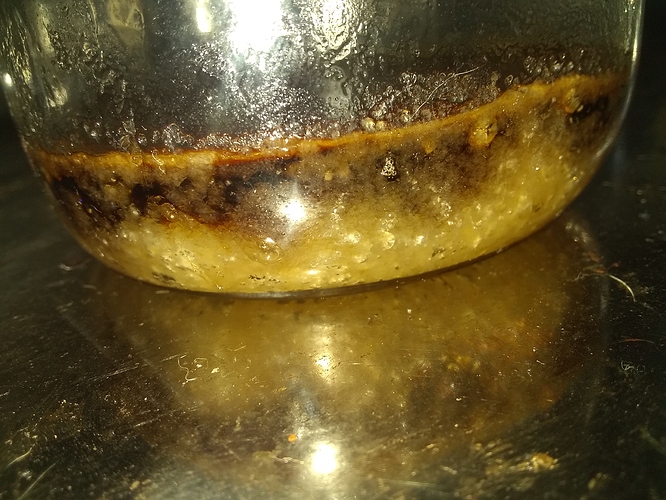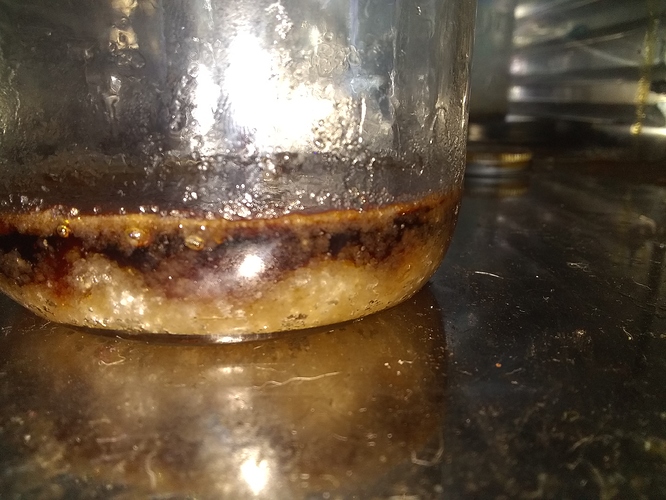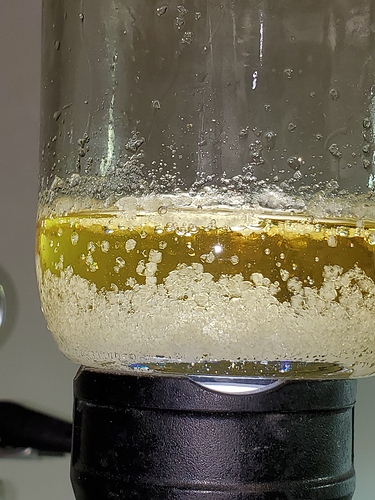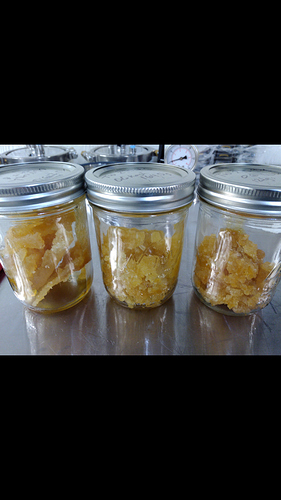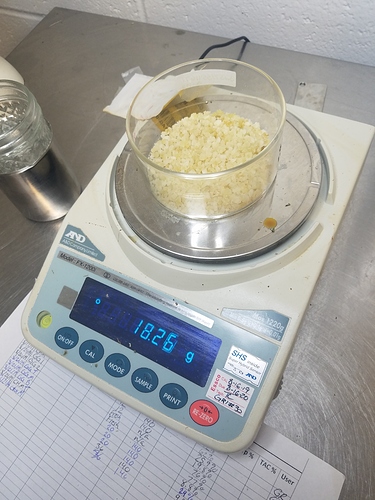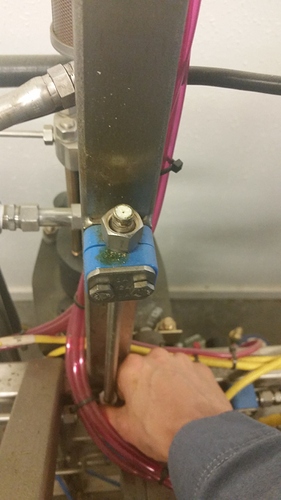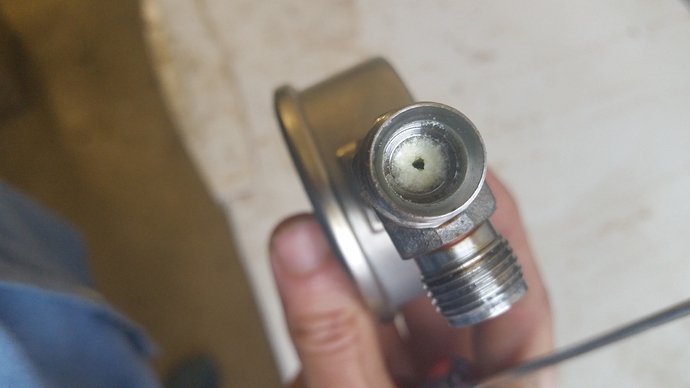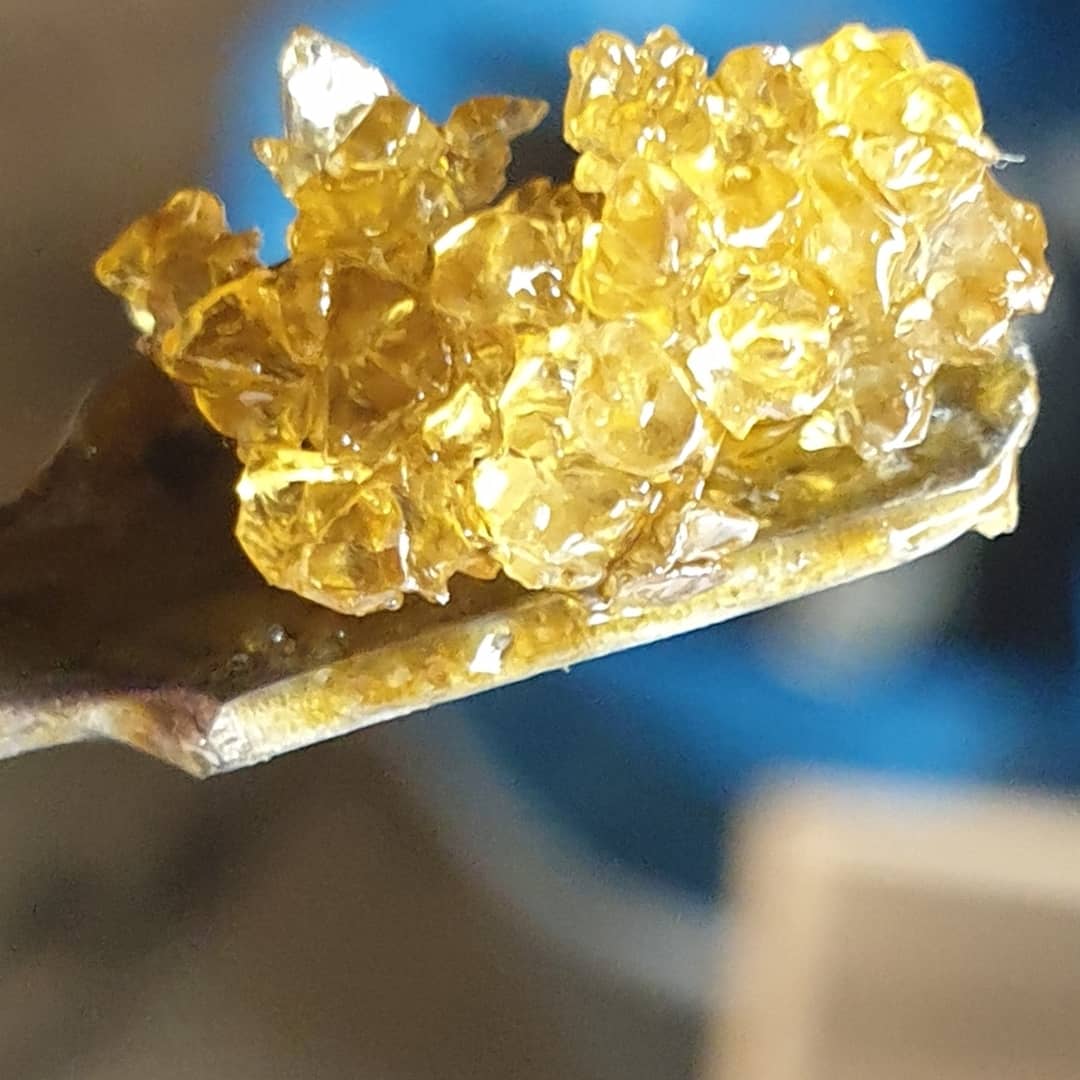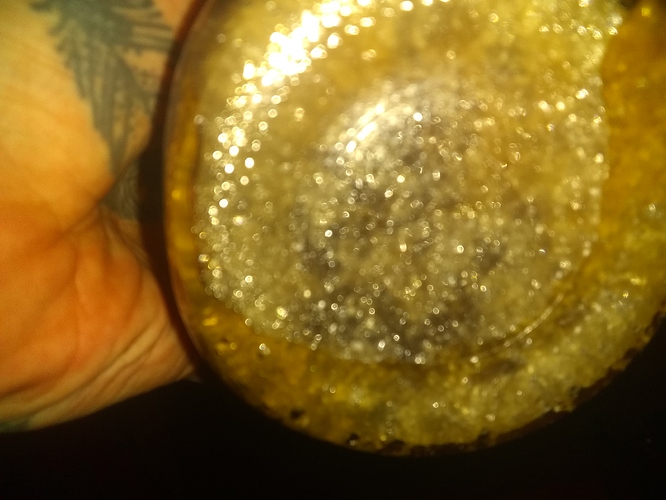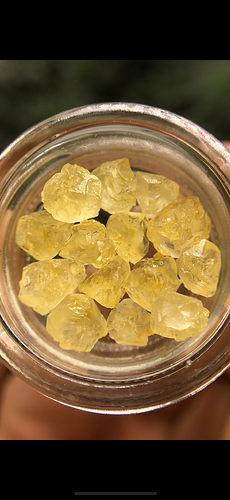No lol, I was specifically looking for procedures on using CO2 extraction to produce THCA diamonds (Waters is a CO2 extractor brand). I’ve never run fresh frozen through the extractor so I’m not sure how to go about taking crude into diamonds (volatile solvents, crashing, and growing I imagine). Your sauce looks really good btw! I’ve been wanting to make some home made diamonds from my homegrown, so I might be able to pull it off with ur tek
Not sure I have seen people making THC-A isolate, or stones, from CO2… I’m sure it can be done, but @rickshaw’s method is definitely for hydrocarbon extraction.
One thing I have noticed is some terp profiles seem to rock up a little better then others, it seems like the gassy, and/or rubber ones will crystallize more for me then some others that tend to be more sugar like crystals smaller and softers. Do you think these types of chemovars have more terps then some of the other ones making the concentration of THCA more, is it just a weird coincidence, is there a good explanation like terpene bp or something similar? I know saucegrant on IG used to sell an sop that said to look for certain terpenes because they are easier to crystallize in.
P.S. I thought this was a good thread to post in, feel free to move to a better suited thread if there is one.
Consider the basic principles of crystallization, at least the methods used in cannabis. You need a super-saturated solution of THCA, and you need it to be (fairly) clean.
I’f you’re using a waters then I suspect you have a method and configuration where you ate attempting to fractionate your extraction via the three cyclones on the end of your rig. A lot of folks seem to like setting it up for THCA in C1, THCA/D9 in C2, and a terpene fraction in C3, depending on how you set your MBPRs and heat jackets.
If you’ve been working with your SFE for awhile then I’m sure you’ve developed a few different methods. Here’s a couple tricks I used back when I used waters SFE.
- Set your parameters to allow for a “clean” terp fraction that has a high amount of THCA. You may have to adjust till you get this right. Once you have a nice collection, put the fraction in either a Mason jar or beaker. Place this in a vacuum oven and set the temps to 5-10c over room temp, so around 25-30c (maybe 35c) and pull vacuum to at least -20mmHg.
The trick here is you will start with a mostly saturated or saturated solution of THCA and terpenes. You want to slowly evaporate the terpenes so that the solution becomes super-saturated. Once it reaches this state, given you have “clean” Terps, they will begin to precipitate and you will more or less do the rest the way most SOPs do. If you have lots of wax, which waters SFE units often do, this will interrupt the process.
- Take a THCA/terpene rich “crude” from your SFE and more or less do the future pentane method.
Remember, THCA is so readily crystalized due to its molecular structure, primarily the two hydroxyl groups and a strongish dipole moment. THCA is also one of most polar of the major cannabinoids for this reason. Terpenes are for the most part organic hydrocarbons, they are solvents, and they are quite volatile. Your monoterpenes will generally be the first to purge as they have the weakest intramolecular forces and tend to be very small molecules (only 2 isoprene units). You can make the volatility of those terpene work for you, but they’re also what most consumers associate with “tasty” concentrates. Sesquiterpenes (3 isoprene units) are often what add some stability to the mixture. The diterpene alcohols (4 isoprene units and a hydroxyl group at the side chain) such as phytol are often lost in the extraction process.
Thanks, but my comment was originally about @JonaaronbrayAzoth post on achieving 96% THCA dust using liquid CO2 as a precipitation solvent. I understand the basic chemistry involved, I was looking for more insight on how this was achieved. My main concern is, as you stated, the excessive amounts of fats/waxes extracted when achieving the high pressures needed for THCA runs. I can always winterize, but then I need to dissolve it back into something for the crystallization process.
Pentane method would work, but do to the image of the company we are only using CO2 and ethanol as solvents. I was mostly curious about using CO2 as the precipitation agent and what type of vessel this would require.
Thanks for the info though! Is your clean terp fraction just the extract from a low pressure terpene run? I wouldn’t think there wouldn’t be much THCA in it unless you combine it with your THCA rich fraction.
Some Zour Applez #EHO sugar coming out of the lab. ig @blazedbiologist
Mob Boss rosin jam ![]()
Fairy Godmother live rosin jam ![]()
![]()
I love that you can crystallize THCA in the plants own oils.
Parameters were as follows:
850psi extraction
5c chiller
250-300psi separator
Half filled extraction vessel
2 hour extraction
These parameters were ran for a week on a large batch of dried trim of average quality.
The percipitate collected between the valve leaving the extraction vessel and the expansion valve in the separator.
This was a function of the delta P of the extraction vessel and the separators. During normal operation the pressure is consistent until the expansion nozzle. Once the extraction vessel valve is closed the pressure in the tubing leading to the expansion point rapidly decreases. This line set is full of loaded solvent and the rapid decompression percipitates THC-A in high purity with other lipids. Once the extraction valve opens the pressures rapidly increases and the more soluble fats and lipids are rinsed away. Thus you have created a tubing line set covered in high purity THC-A which further increases the likelihood of more THC-A formation.
Supercritical Co2 is useless for this process and should be avoided.
I can scale this process to work with crude oil which makes the prospect of a Co2 machine being worth the capital feasible… maybe.
That’s awesome, thanks for sharing! Makes sense and it seems like a good way of producing THCA with any CO2 extractor. What brand extractor are you using? I see tons of blockage issues with using the Waters biobotanical extractor mainly due to the small diameter lines. I would imagine you can cycle opening/closing the valve to achieve greater yield. Are you only closing to precipitate after the 2 hour extraction duration?
It was a Apeks 5000psi model with a haskel with about 50 hours on it (leaking pretty steadily).
This percipitation wouldn’t happen in any machine and not as readily as it did without a leaking gas booster.
The apeks has a program that draws the separators down while opening a valve to the Co2 cylinder. When this happens the valve feeding the separators is closed which allows the lines feeding the expansion nozzle to equalize with the separators. This causes the liquid in the lines feeding the nozzle to percipitate THC-A onto the lines after the closed valve.
Once the Apeks program decides it’s pull enough gas from the Co2 cylinder that it can maintain pressure in the system the valves return to the extraction position and the lines leading to the nozzle return to the pressure of the extraction vessel.
The factor of the leaking gas booster is required to insure that the Apeks program repeatedly called for more gas from the Co2 cylinder. With the valve feeding the expansion nozzle closed the percipitation can once again continue.
https://future4200.com/uploads/default/original/3X/6/c/6c1923f2dd33ec92cd2f9572a405fca198a9cfd6.mp4 https://future4200.com/uploads/default/original/3X/b/a/ba7012322c95f034ee3a3778ebedb492b804508b.mp4
What Tek are you using?
4 days?
